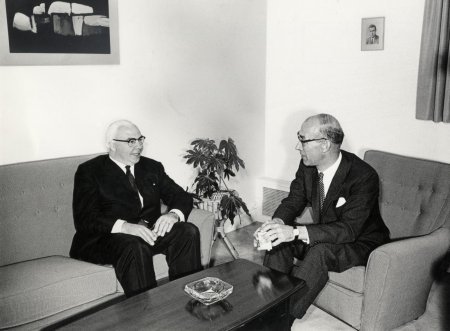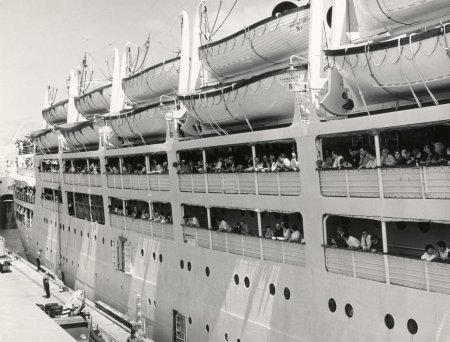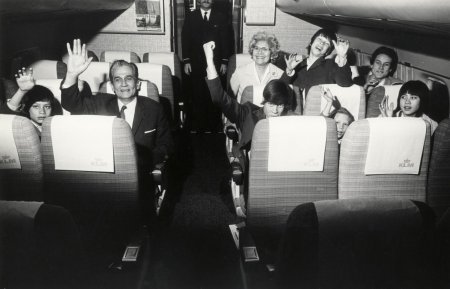
By Martin Wyss, IOM chief of Mission, The Hague
To quote Forrest Gump: “I don’t know if we each have a destiny, or if we’re all just floating around accidental-like on a breeze, but… if I was going somewhere, I was running!”
In the case of IOM’s history in The Netherlands, the past came spilling out of a dusty cabinet when I took up my new role a year ago. What I learned as I flipped through dozens of old photos (see Flipbook) during a quiet Friday afternoon trip down memory lane, is that the organization grew out of the Dutch Emigration Service of the Ministry of Social Affairs in 1991.
Unknown to me until I opened the old grey filing cabinet is that we had inherited a large archive of historical photographs documenting Government sponsored emigration from the Netherlands around the world. The photos, inscriptions and documents also highlighted the important role of IOM’s predecessor organisation, the Intergovernmental Committee for European Migration (ICEM), in resettling migrants rather than returning them from Europe.

Indeed those were different times. It’s helpful to be reminded of this today when passions so often rise about immigration, that the ebb and flow of people has affected all continents and nations.
As the National Archive showed interest in completing its own Dutch Migration Section, we decided to select, enlarge an prepare them for exhibitions in order to preserve the memory of our organisation’s past, and in order to illustrate Dutch emigration after the Second World War. The exhibition also contains historical audio messages from Dutch emigrants to their relatives back home.
In view of IOM’s key function in Assisted Voluntary Return (AVR) in the Netherlands, it was useful to remind the audience and the public at large that not so long ago, IOM’s main role consisted in assisting people to emigrate and resettle – even in the Netherlands.

The exhibition was opened by H.E. the Australian Ambassador Neil Mules at IOM’s annual Embassy Reception in The Hague City Hall on 23 January 2013. Ambassador Mules paid tribute to the important contribution of Dutch migrants to his country over the past 400 years, and underlined the importance of Australia’s cooperation with IOM.
The Canadian novelist Peter Behrens also addressed the audience and spoke the subject of his research, the plight of Irish migrants in North America in the middle of the 19th century.
In 1951 the International Refugee Organization (the predecessor of UNHCR) estimated that some 5 million persons should emigrate in the following 10 years from over-populated European countries. ICEM, provided and arranged for transportation of migrants and refugees from Europe to countries overseas.

Between February 1, 1952 and December 1960, 313,000 persons were moved by ICEM to Australia, of whom 81,000 were refugees. This is more than one quarter of the more than a million immigrants received by Australia since the end of World War II. In 1956 approximately 40% of all overseas migration from ICEM member countries on continental Europe were assisted by ICEM.
Tens of thousands of people left the Netherlands in the 1950s and 1960s. In those years overpopulation was a serious concern: there was not enough land to farm and not enough work in the Netherlands.
The Dutch government actively promoted emigration. The Dutch Emigration Service organized information sessions for Dutch citizens interested in emigration. Countries like Australia, New Zealand, Canada and Brazil offered better opportunities and were in dire need of manpower for their own economic development.